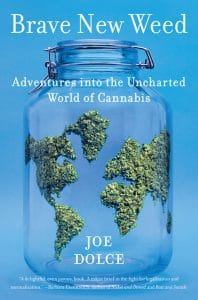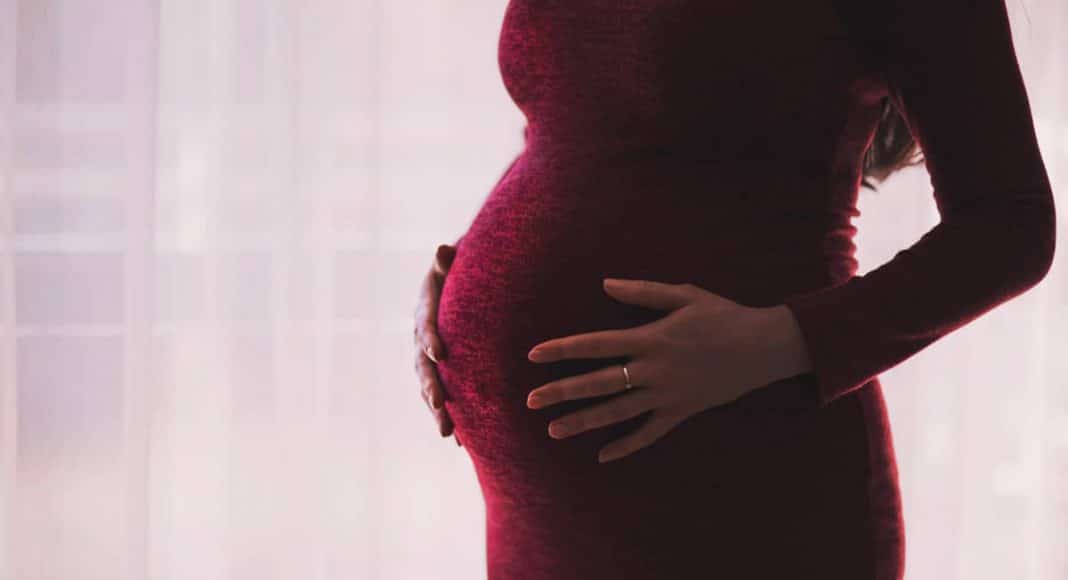Every so often another scary piece about marijuana damaging the brains of babies and children crops up, just as it did on the front page of last week’s New York Times: “Pregnant Women Turn to Marijuana, Perhaps Harming Infants” the headline read and the piece cited several preliminary studies indicating that pregnant women who partake of the herb risk having babies that are underweight and possibly cognitively impaired.
Having spent the last three years writing Brave New Weed, I read many such studies on the “perhaps harmful” effects, many of which are suspect.
-
Related Story: One Man’s Journey: The Truth Behind Marijuana Prohibition
But the topic of in utero development is not to be taken lightly, so it’s crucial to parse myth from fact.
Of course, a pregnant woman should exercise caution when using any medication or substance that might affect the health of her baby as her blood is coming led with that of her fetus. But cannabinoids don’t function like other molecules and at this point there’s a small, but growing amount of evidence that they might actually might further a baby’s development, or at least do no harm.
It’s not the commonly expressed point of view, but it’s crucial to remember that most of the science in the US has been carried out by the National Institute of Drug Abuse, which has a mission to only investigate the harmful effects of the plant while ignoring the benefits. Twenty years ago, science assured us that the concept of medical marijuana was a joke. So, yes, science, too, can change its mind.
Here’s What We Know
The most prevalent cannabinoids found in cannabis, THC and CBD, are bioidentical to two chemicals produced by the human brain, anandamide and 2AG. This was discovered in 1992. The next question is: Why does the brain produce these chemicals? What is their function?
The answer, in part, was discovered by the late Dr. Ester Fride, an Israeli neuroscientist who was investigating the ways cannabinoids influence a newborn’s development. Her science showed that without a functioning endocannabinoid system newborn rats failed to suckle or begin maternal bonding. They died much sooner than babies with functioning endocannabinoid systems and Fride concluded that endocannabinoids are essential to a baby’s ability to thrive.
-
Related Story: Here’s The Information We Have On Cannabis And Pregnancy
Equally compelling is the work Dr. Melanie Dreher, the Dean of Nursing at Rush Medical Center in Chicago. In the early 1990s Dreher traveled to Jamaica to investigate a group of rural and impoverished Rastafarian women and their infants. These “Roots Daughters” smoke ganja as a daily health ritual; they rely on it to maintain appetite, rest and allay nausea during pregnancy. They also serve a mild ganja tea to their families as a health tonic — when you’re poor it’s less expensive to forestall illness than to treat it once it hits.
Dreher followed 30 Roots Daughters and their babies for five years until the children entered school. She found that infants whose moms smoked ganja socialized more quickly, made eye contact more quickly, and were easier to engage than the babies of non-smokers. There were no developmental differences between the groups. In fact, on tests for verbal ability, motor, perceptual and quantitative skills, memory and mood, the kids of smokers scored higher.
“Given what everyone else was finding at the same time, we thought [our findings] were pretty darned interesting and a little counterintuitive,” said Dreher.
Though her findings were unprecedented they were published in 1994 to resounding silence. In the wake of that silence Dreher applied to NIDA for additional funding to return to Jamaica to follow the same children at age 10 but her request was denied. Instead, NIDA continued to commission more studies from which researchers concluded that exposure to (extraordinary quantities of) cannabis in the womb might harm the brain, lower IQ, and damage “executive function.” Different variations on these dire warnings are still being trumpeted today, which brings us to last week’s New York Times.
Life Not Matching Research
Women throughout the world have been using cannabis as a natural medicine for centuries with no apparent harm so for an alternate interpretation of the findings cited in the Times I spoke to Dr. Stacey Kerr, a family physician and cannabis educator in Santa Rosa, Calif.
Dr. Kerr is one of the rare physicians who openly discusses use of cannabis (probably because she works in a state that has had an operational medical marijuana program for 21 years).
“I grew up in the 1960s and we used cannabis when we were pregnant, and we were pregnant a lot,” Kerr, a mother of two, now in their 40s, tells me. “I delivered kids who were exposed in utero and watched them through childhood and into adulthood and I’m not seeing the results of these studies play out. I’m a physician and I want to believe these studies, but real life outcomes weren’t matching the research predictions.”
-
Related Story: Study: Marijuana Use Has Increased In Pregnant Women
With the assistance of other researchers and a statistician, she examined the research most frequently quoted and found some notable discrepancies with the ways the samples were put together and the extrapolations of the findings.
In the study babies being born at lower weights, she discovered that all the women surveyed were asked if they had used any and all illicit substances (not specifically cannabis) and were also all from lower socio economic backgrounds at a public hospital. There were no long term followups. Kerr also points out, crucially, that there was no difference in the Apgar Scores the 5 key indicators of a baby’s health just after birth.
The other frequently quoted study by claims that kids of cannabist moms do less well in life and are slower in school. But this research, according to Kerr, was skewed by factors other than prenatal exposure. In addition to prenatal exposure, those kids had to have one of the following conditions: IQ problems by age 6; depression or inattention by age 10; or they had to be using cannabis themselves before age 14. “Clearly it wasn’t just cannabis exposure that led to these results,” says Kerr.
Are Cannabinoids The Same As Other Molecules?
The final claim is that prenatal exposure to THC somehow “miswires” the brain and impairs cognitive development. Indeed, endocannabinoids are active in the fetal brain. They help neurons grow in the correct direction and yes, using cannabis does add additional cannabinoids into to the equation, perhaps displacing those that occur naturally in the body. But there is no research to date showing that displacing those naturally occurring endocannabinoids could be problematic.
In fact there is another study hinting that additional cannabinoids seem to somehow protect neural functioning. Those researchers looked a complex neural process called “global motion perception” that is damaged in kids with abnormal brain developments, such as autism or fetal alcohol syndrome. (Kids with impaired GMP are characterized as “seeing the trees but not the forest.” They see individual details in their field of vision but not the entire frame.) This study found that kids exposed to alcohol during pregnancy had impaired GMP, but kids exposed to cannabis alone in absence of alcohol are have 50% more functionality than the general population. What’s more, exposure to both cannabis and alcohol seemed to cancel each other out.
Kerr’s conclusion: “It’s not ‘Drink alcohol and use cannabis and your baby will be just fine,’ but it is interesting that exposure to THC in brain made this indicator of neural development better.”
A Question Of Intent
Clearly, the mystery of cannabinoids and pregnancy is yet to be solved. In the meantime, I asked Kerr if she were pregnant again if she’d use cannabis? To my surprise she hesitated before answering.
“I hesitated because pregnant women today are going crazy — there’s always another article with more we can’t do, so for me it comes back to intent and how you use cannabis as a medicine. If I can’t eat or I’m nauseated or in pain, or if I have a two-year old who’s going crazy and making me so irritable that I’m yelling at the kids and my husband and if taking a puff relaxes me and makes me nicer then, sure, I’d use it.
“That said, there is also such a thing as cannabis abuse disorder so if a patient is using too much and the kids aren’t being fed or the house isn’t getting cleaned I’d think about it differently and advise them to stop.
“But making women afraid that something drastic is going to happen if they take a vapor hit or a puff on a joint based on the current science isn’t beneficial.”

Joe Dolce is the author of Brave New Weed. He is the former editor-in-chief of Details and Star. His book follows his adventures into the fascinating “brave new world” of cannabis, tracing its history and possible future as he investigates the social, medical, legal, and cultural ramifications of this surprisingly versatile plant. Rolling Stone magazine called it “one of the most fascinating accounts of the state of marijuana. A charming, honest look into pot’s past—and what that says about its future.”


